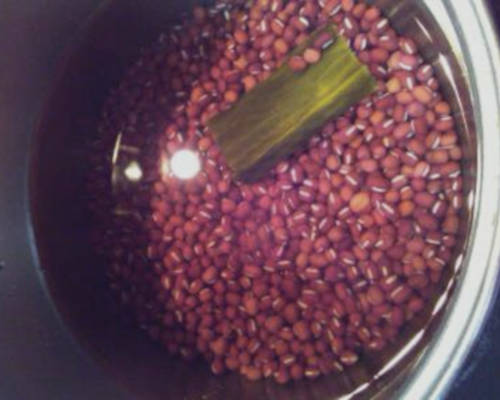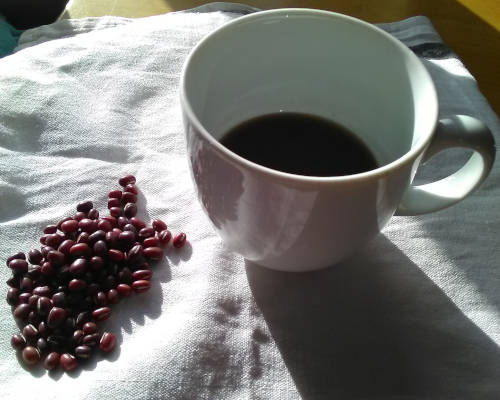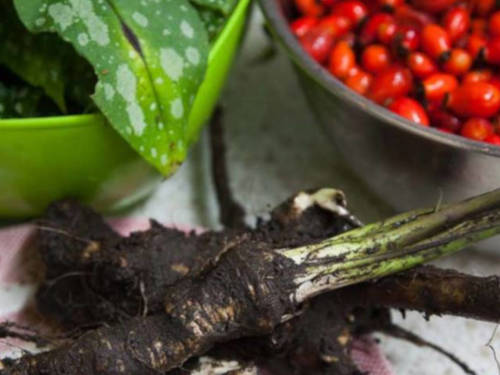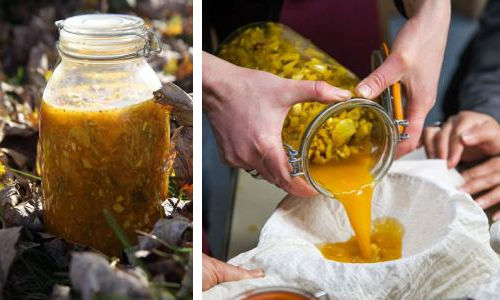Imbolc
Celebrating our commitment to the earth.
Marie Edwards
In early February, as the earth begins to embark on her process of reawakening, some of us may celebrate the seasonal festival of Imbolc, or Candlemas as it is known in the Christian Church. The dark, cold, bitter winter days are about to fall behind us as we slowly make our way towards Spring. As we continue to let go of habits, ideas, beliefs and other aspects of our lives that no longer serve us we might start to turn our attention to what we wish to bring to life this year. We may envision what we hope to achieve in the year ahead and start the process of planning how we may go about this.
The original meaning of the ancient word ‘Imbolg’ is ‘in the belly’. The planetary life force is rising, gestating; preparing to blossom. This is a period in which our ewes are pregnant, the commencement of the lambing season. We witness the unfurling of the snowdrop; the first shoots and buds of new growth as the land once again is gradually warmed, nurtured and supported by the increasing strength of the sun.
This is still a period of intense hibernation for a few of our wild mammal companions. Hedgehogs, bats and dormice remain rested and hidden away from the slow, initial stirrings of nature. This remains a time for reflection and rejuvenation. And so, what might you need to do to prepare for an active year ahead? Is there anything you need to muse over more deeply, to organise practically or are you still dreaming things into consciousness?
Perhaps this is a good time to begin to connect with a sense of hope. The air is still clear and crisp but the promise of life seems to be nudging us forwards, encouraging us to think about what is possible. Where can we focus our energies this year with the support of the earth behind us? We must make these choices wisely, noting that if our actions are not good for all then they are not so ‘good’. By referring to ‘all’ I mean ALL life-forms including mammals, ocean dwelling creatures, insects, trees, plants and other living beings, not just our human family. We are living in a time in which the web of life is hanging by very thin, taught threads. A web that each of us must reconnect with gently, deeply and securely in order to ensure that a healthy balance of life is able to be re-established here on earth. We can recreate a world in which harmony, diversity, joy, engagement, fulfilment, value and mutual support reigns, but we will need to be active participants in creating this. 2019 is not a year in which to be idle. It is a year to Spring forth with renewed vigour, safe in the knowledge that our planetary consciousness is enabling and supporting us in our great becoming.
If you wish to engage in a ritual or ceremony, it might be worth partaking in a genuine gesture or making a vow of commitment to Mother Earth and her Peoples. You could light a candle to symbolise how you wish to shine your own light in this world, to boldly illuminate your commitment to nature at this time. Given that we have all taken so much from mother earth it might be wise to consider how best to ‘give back’, to show gratitude, offer protection, love and support. If you are so inclined you could write a song or poem, make a symbol out of natural objects, fabrics or textiles to show your dedication to the planet placing this somewhere prominent as a reminder of your promise. You could think of one thing that you could do to care for other living creatures, such as build a bird box, plant a hedgerow or use the search engine Ecosia regularly as every single action will contribute to the whole. With many blessings as we progress towards our great remembering, recovery and renewal.
 |
|---|
| Light a candle for Imbolc |
 |
Be ‘In-Tune’ with Nature
Krysia Soutar
In the Northern Hemisphere, mid-winter is at the winter solstice, which is normally 21st of December, this is when the sun is farthest south. The life energy of the northern earth settles deep within the soil. All of nature is quiet, and activity stills.
We also experience the need to conserve our energy for warmth, we move within the home more and socialise with family and friends. We reflect on the past seasons and start to make plans for the future.
The Five Transformations
Winter is ruled by the Water element. The two organs associated with this time of year are the Kidneys/ Adrenal Glands and the Bladder. Our kidneys are most vulnerable in winter. The healthy functioning of the kidneys is of great importance to maintaining balance within the body. If the kidneys and adrenal glands (these sit on top of each kidney) become over-tired or exhausted we will loose our vitality. Nurturing the water element will help you live a long life.
How do we work with nature to assist these organs? Nature allows us to rest more at this time of year. We conserve our energy and avoid any excessive exercise or cold. It is also helpful to keep the kidney area warm. Some people wear a hara-warmer to protect their kidneys during winter. For me, I love my hot water bottle! If we take adequate rest we will be bright and breezy for spring. Eat plenty of root vegetables and winter greens; lots of warming soups and stews. Whole-grain dishes with some sea vegetables are very good for strengthening the water element.
Taste: The salty flavour is related to the kidneys, use natural sea salt as it still contains all the trace minerals needed for a healthy body and mind.
Emotions associated with the Kidneys
According to the five element theory the positive emotion associated with smooth kidney function is said to be ‘courage’ whereas a feeling of ‘fear’ is associated with poor kidney/ adrenal gland function. Modern-day processed food is full of salt, fat and preservatives. These do not help to produce healthy kidneys.
Medicinal tea
A tea made from the juice of aduki beans is great for strengthening the kidney/adrenals, bladder
- 1 cup organic aduki beans
- 5cm (2inch) strip of kombu seaweed (comes in long strips, just cut off a 2 inch piece off and rinse under cold water)
- 4 cups of water
Method
Rinse aduki beans in sieve with cold water, place in pot and soak for 4 - 6 hours or overnight.
Rinse the kombu add to pot with the water and aduki beans.
Bring to a boil, lower the flame, cover and simmer for approximately 20 – 30 minutes. Remove kombu, you can reuse it in another dish.
Continue to simmer beans for a further 30 minutes, or to taste (the longer the cooking time, the richer the tea).
Strain out the beans and drink a small cup of the liquid while it's still hot.
You may continue cooking the beans longer with additional water until they are soft and edible, then use for standard bean portions, with seasoning. Do not add salt to the beans until they are fully cooked.
 |
 |
| Infusing aduki beans and kombu | Aduki bean tea |
Medicine for winter
Edwina Hodkinson BSc(Hons) MNIMH Medical Herbalist
Deep in winter, the trees are bare and the remnants of last year’s dead grow look dark and withered against the sleeping land. People complain of the cold dampness, lethargy and lack of motivation, forgetting that winter is a time when all the energy and life force of the nature goes back into the earth to sleep out the winter or at least to slow down and preserve precious energy.
It feels good to dig in the cold earth, feeling and pulling the roots of the horseradish with my fingers. It’s got long roots that sometimes go deeper than I expect them to and when they break off I catch its sharp aroma in my nostrils. The horseradish in my garden has taken for itself more space than I have allocated to it and is verging on being invasive. At least it can be used in medicine. Scrubbing and chopping reveals a familiar, peppery aroma, with a flavour that’s hot, drying and pungent. Back in the kitchen, I grate and chop the fresh root and it teaches me it’s medicine, as my eyes water and my nose runs. Horseradish is a great herb for clearing sinuses, chests and airways.
Horseradish is herb that can be found in allotments, gardens and by the side of roads and near water. It’s great herb for getting things moving in the body, which can include moving stuck phlegm in the lungs and clearing catarrh from blocked sinuses. It has a microbial action that’s good for colds, fevers and flu.
Horseradish is good for enhancing digestion, it stimulates gastric juices and puts a bit of fire in the belly. Its best avoided with gastritis, stomach and duodenal ulcers as it can be an irritant. Its also a circulatory tonic so is helpful for poor circulation.
Horseradish can be used as a food, in vinegars, a syrup, or a poultice on arthritic joints (between gauze), which is an old remedy which has been successful in the past. I like to use it in a hot joint and muscle rub or in a fire vinegar alongside other hot anti-viral herbs such as Ginger, Garlic, Chilli and Cinnamon.
 |
|---|
| Horseradish root |
 |
Fire Cider Vinegar
Fire Cider vinegar is amazing medicine, first devised by Rosemary Gladstar an American Herbalist and now popular all around the world as a folk medicine. It’s easy to make as it uses kitchen cupboard ingredients. Fire cider is powerfully anti microbial and effective for coughs, colds, sinusitis, boosting the immune system, helping improve digestion. It’s empowering to make the yellow pungent liquid that can be also used in salad dressings. For those working more traditionally, it can be made on a dark moon and buried in the earth for a whole moon cycle before digging up, straining and bottling. It’s also amazing to make as a community.
The standard base ingredients are apple cider vinegar, garlic, onion, ginger, horseradish, and hot peppers, other herbs can be thrown in for added kick such as thyme, star anise, cloves, rosehips, oregano, sage and Rosemary.
Ingredients
- 1/2 cup fresh grated ginger root
- 1/2 cup fresh grated or finely chopped horseradish root
- 1 medium onion, chopped
- 10 cloves of organic garlic, crushed or chopped
- 2 organic jalapeno peppers, chopped
- Zest and juice from 1 organic lemon
- Several sprigs of fresh organic rosemary or 2 tbsp of dried thyme or sage
- 1 tbs Turmeric powder or fresh rhizome
- 1/4 tsp cayenne
- organic apple cider vinegar
- raw local honey to taste
Directions
Prepare all of your roots, fruits, and herbs and place them in a Kilner jar. Shake well! Store in a dark, cool place for one month and remember to shake daily. After one month, use cheesecloth to strain out the pulp, pouring the vinegar into a clean jar. Be sure to squeeze as much of the liquid goodness as you can from the pulp while straining. Honey can be added if desired for sweetness.
 |
|---|
| Fire Cider Vinegar - amazing medicine! |
 |